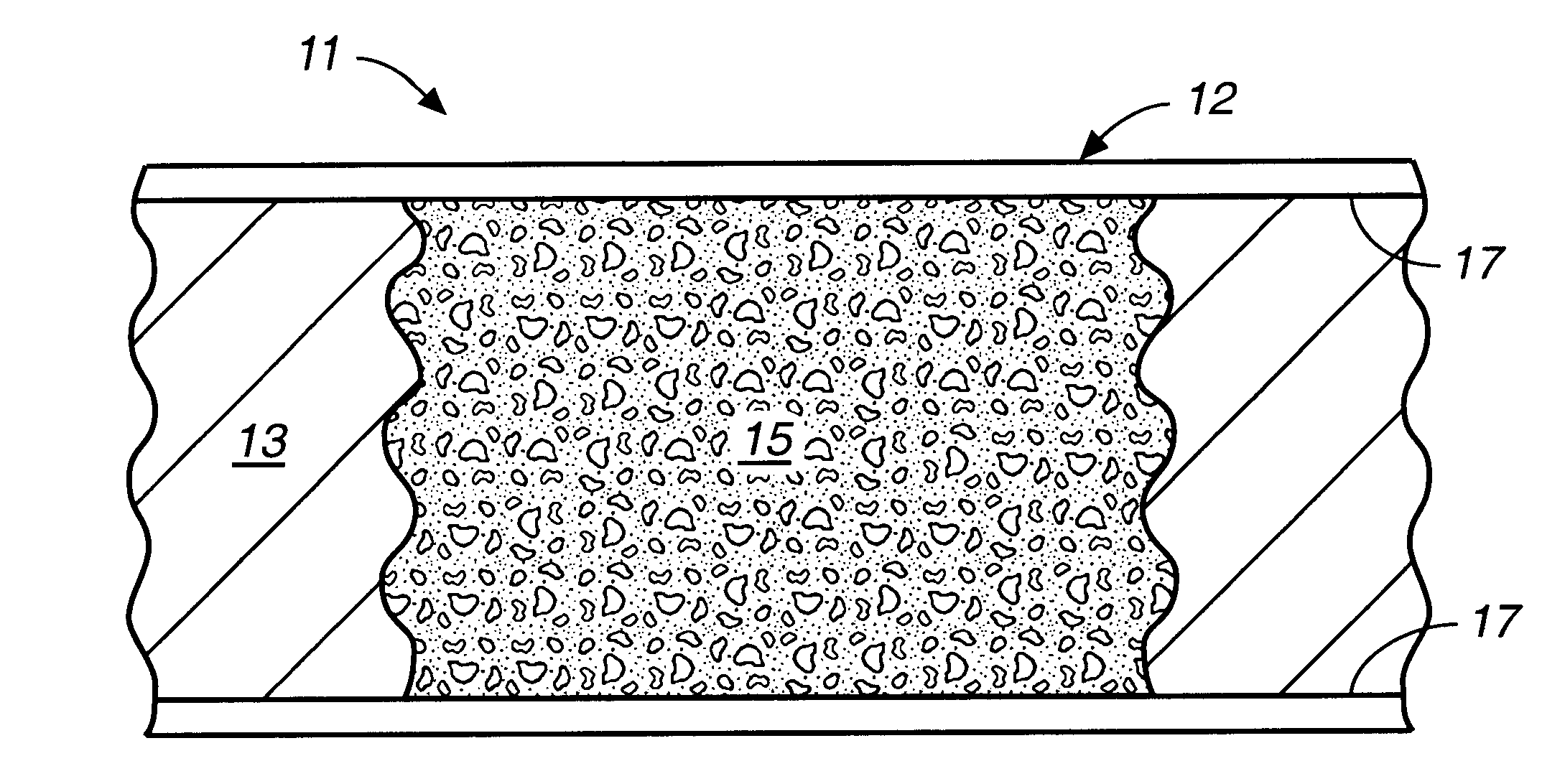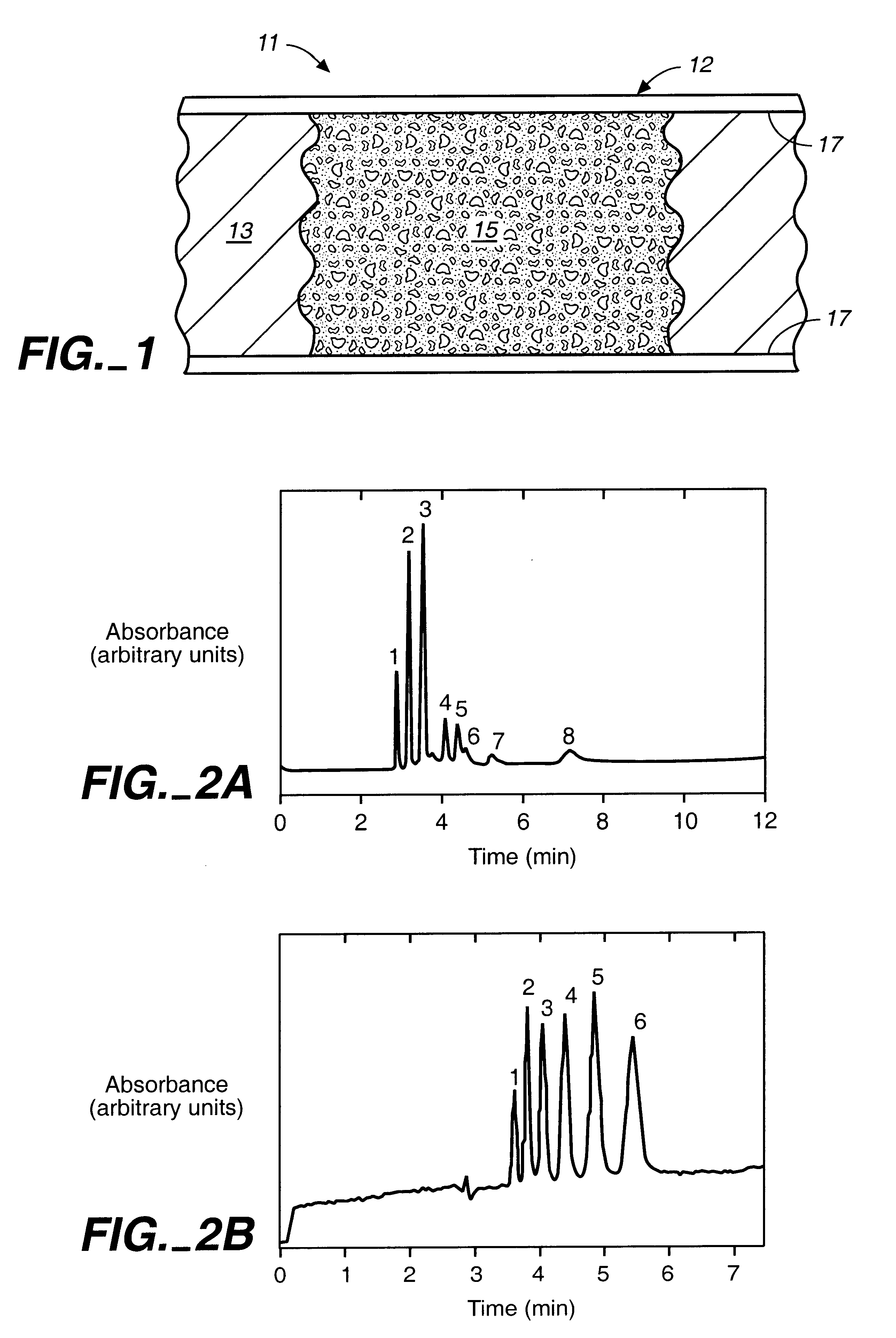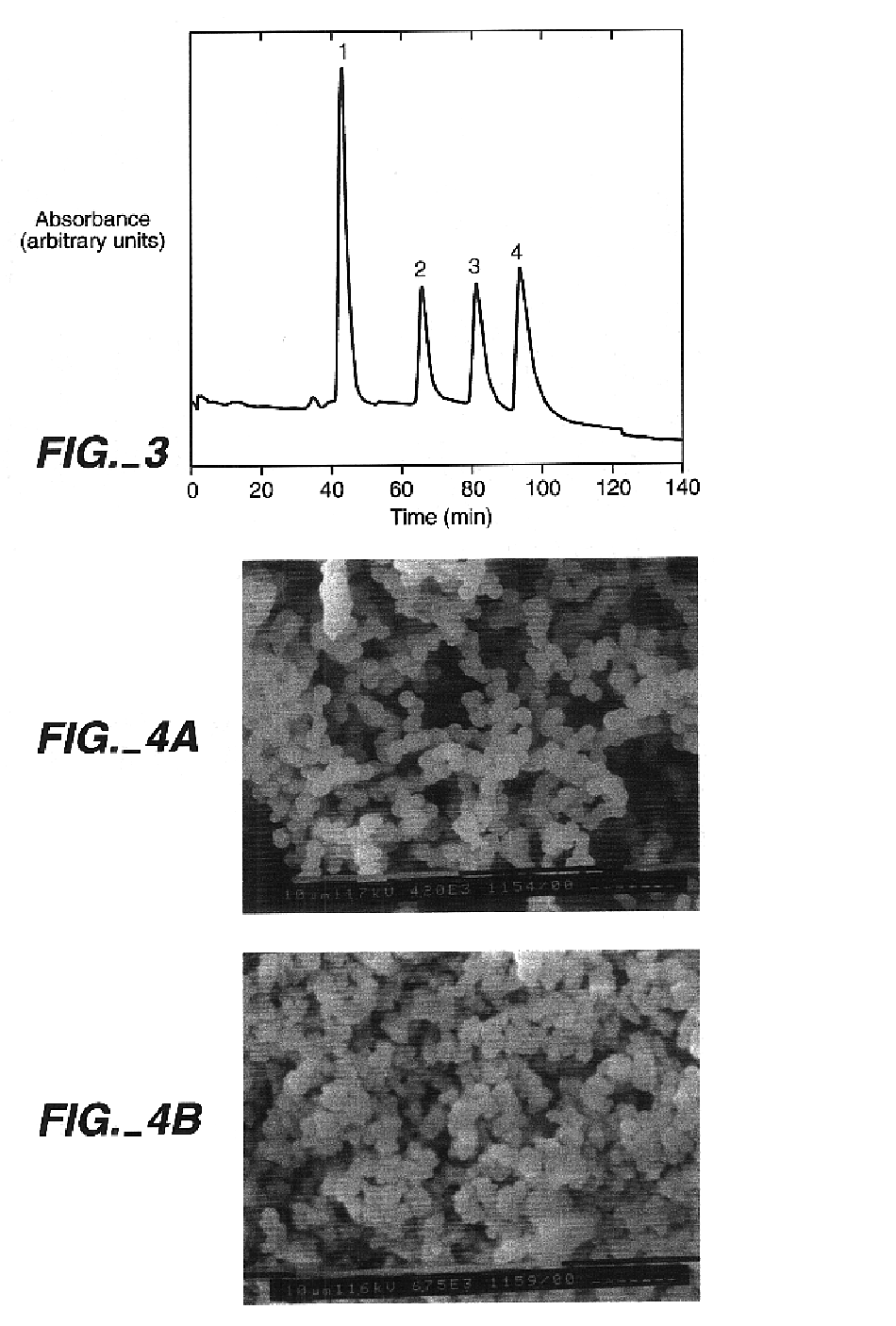Bonded phase photopolymerized sol-gel column and associated methods
a photopolymerized sol-gel and bonding technology, applied in the field of separation columns, can solve the problems of low detection sensitivity, high mechanical stability, and difficulty in preparing packed columns, and achieve the effects of short preparation time, low sensitivity at low concentration, and simple structur
- Summary
- Abstract
- Description
- Claims
- Application Information
AI Technical Summary
Benefits of technology
Problems solved by technology
Method used
Image
Examples
example 1
[0079]Materials and Chemicals. Fused-silica capillaries (75-μm i.d.×365-μm o.d.) were purchased from Polymicro Technologies, Phoenix, Ariz. Methacryloxypropyltrimetoxysilane (MPTMS) was purchased from Gelest, Tullytown, Pa. and Sigma-Aldrich, Milwaukee, Wis. and was used without purification. HPLC-grade toluene, phenanthrene, pyrene, alkyl benzenes, alkyl phenyl ketones, and steroids were purchased from Signa-Aldrich, Milwaukee, Wis. Irgacure 1800 was received from Ciba, Tarrytown, N.Y.
[0080]Instrumentation. A Beckman P / ACE 2000 capillary electrophoresis instrument with a UV-absorbance detector was used to carry out all CEC experiments. An XL-1500 UV cross-linker, available from Spectronics Corp., Westbury, N.Y., equipped with six 15 W blacklight tubes of predominantly 365-nm wavelength was used to irradiate the reaction solutions. Scanning electron microscopy (SEM) analyses were performed on a Philips SEM 505 scanning electron microscope, available from Eindhoven, Netherlands.
[0081...
example 2
[0097]The separation column was prepared as described in Example 1. A mixture of 1:1 hexane / toluene was used for the porogen. The separation column had a separation performance similar to that of a separation column made with 80 / 20 toluene / reaction solution. A column efficiency of 68,000 plates / m (RSD 7.0%, n=5) for thiourea and an electroosmotic flow (EOF) velocity of 3.7 cm / min was obtained.
example 3
[0098]A mixture of 375 μL of MPTMS and 100 μL of 0.12 M hydrochloric acid was stirred for thirty minutes at room temperature. 27 parts of this mixture were combined with 73 parts of toluene to give 200 μL of the final solution. 5% by weight of the final solution of the photoinitator Irgacure 1800 was added, and the resulting sol-gel solution was stirred for five minutes before use. A 75-μm i.d.×365-μm o.d. fused silica capillary was filled with the sol-gel solution, and the separation column was exposed to UV light in a Spectrolinker X1-1500 at 365 nm to affect photopolymerization. The polymerization length of the porous matrix was controlled by removing a 15-cm strip of the polyimide coating of the capillary prior to irradiation for five minutes. Unreacted reagents were flushed with ethanol. The total length of the capillary was 25.6 cm (18.8 cm from inlet to the detector window). The resulting column was conditioned with the separation solution prior to use.
[0099]All electrophores...
PUM
| Property | Measurement | Unit |
|---|---|---|
| length | aaaaa | aaaaa |
| diameter | aaaaa | aaaaa |
| diameter | aaaaa | aaaaa |
Abstract
Description
Claims
Application Information
 Login to View More
Login to View More - R&D
- Intellectual Property
- Life Sciences
- Materials
- Tech Scout
- Unparalleled Data Quality
- Higher Quality Content
- 60% Fewer Hallucinations
Browse by: Latest US Patents, China's latest patents, Technical Efficacy Thesaurus, Application Domain, Technology Topic, Popular Technical Reports.
© 2025 PatSnap. All rights reserved.Legal|Privacy policy|Modern Slavery Act Transparency Statement|Sitemap|About US| Contact US: help@patsnap.com



